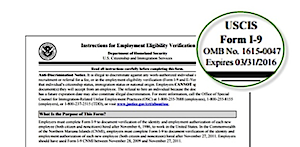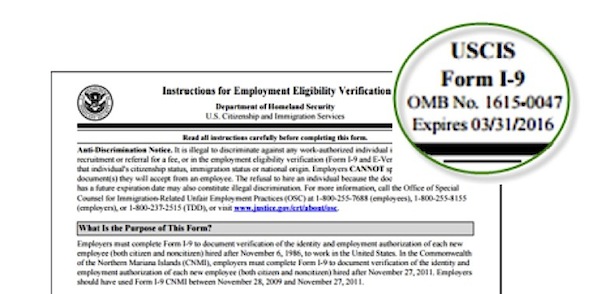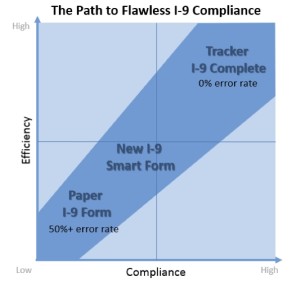 As the warmer weather of Spring sets in, many organizations are gearing up for a hiring spurt that will include many seasonal and part-time employees. During periods such as this, when volume is high and employee types are varied, it’s important to make sure that your employment eligibility verification process remains sound and your level of compliance is not compromised.
As the warmer weather of Spring sets in, many organizations are gearing up for a hiring spurt that will include many seasonal and part-time employees. During periods such as this, when volume is high and employee types are varied, it’s important to make sure that your employment eligibility verification process remains sound and your level of compliance is not compromised.
Here are some of the most common mistakes you can avoid:
Mistake #1 – Organizations fail to treat the I-9 and E-Verify process as seriously for temporary, seasonal employees as permanent, long-term employees.
Even though an employee may be temporary or seasonal, you still need to properly complete the Form I-9 and comply to the E-Verify laws for your state. You will have to live with that I-9 form, as you would for any employee, for a minimum of three years. During an I-9 audit, ICE (U.S. Immigration and Customs Enforcement) treats all I-9 forms equally and can fine you up to $1,100 per error.
Mistake #2 – Forgetting the 3-day grace period to sign Section 2 does not apply for employees hired to work less than 3 days.
Normally you have until the 3rd business day after a new employee starts work to complete Section 2 of the I-9, but if the employee is only hired to work for 3 days for less, you must complete Section 2 on their first day of work.
Mistake #3 – Accepting a receipt in lieu of an original Section 2 document.
Unlike longer-term employees, for those hired to work 3 days or less, the employer can only accept an original Section 2 document.
Mistake #4 – Following inconsistent I-9 practices when re-hiring temporary or seasonal employees.
Always be consistent, even across worksites. Employers can simply update the Form I-9 on file for a rehire, or create a new Form I-9, depending upon certain conditions. You may not need to re-verify continuing employees who are approved for a leave of absence, temporary lay-off for lack of work, or transfers to a different worksite. Review the USCIS Form I-9 Rehire Guidelines to make sure you are in Form I-9 compliance for re-hires.
Mistake #5 – Failing to E-Verify seasonal, temporary or re-hired employees in accordance with E-Verify laws.
You may need to E-Verify seasonal, temporary or re-hire employees, depending upon whether or not you previously created an E-Verify case for the individual and what document they presented for the completion of the Form I-9. Review the USCIS E-Verify Rehire Guidelines to make sure you are in E-Verify compliance for re-hires.
Mistake #6 – Attempting to manage the I-9 and E-Verify process with paper or basic electronic forms.
Adopting an automated I-9 and E-Verify solution, such as Tracker’s I-9 Complete
Tracker is the most trusted provider of I-9 and E-Verify software. We help thousands of customers manage the legally-mandated, time-sensitive processes with efficiency, reliability and complete visibility. Only Tracker has a perfect 13-year record with federal agencies and systems, delivering flawless compliance with just half the effort, every time. Contact us for more information.




